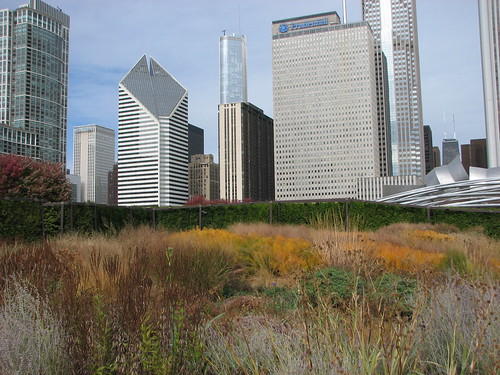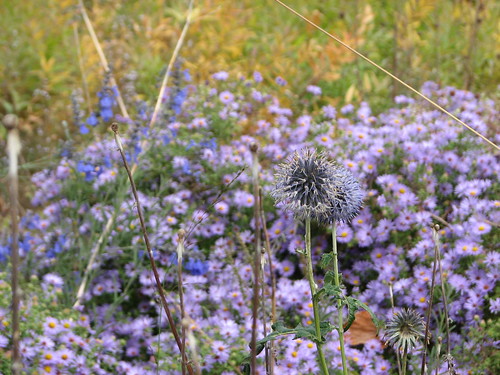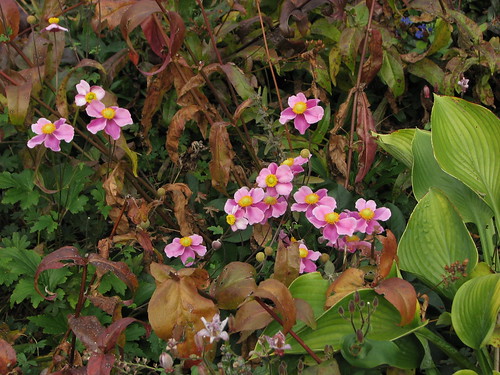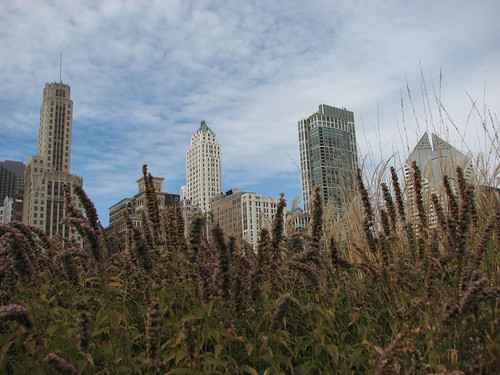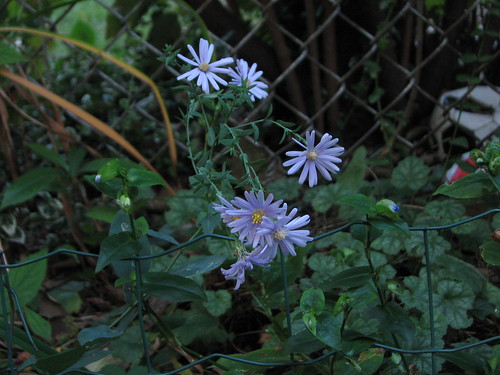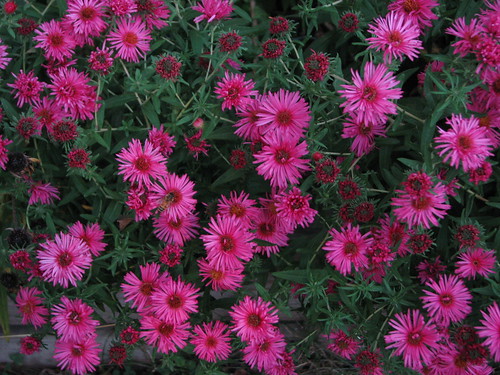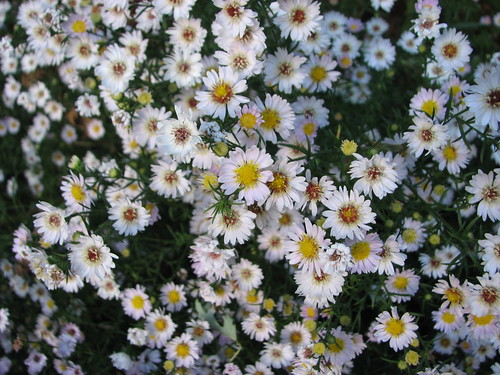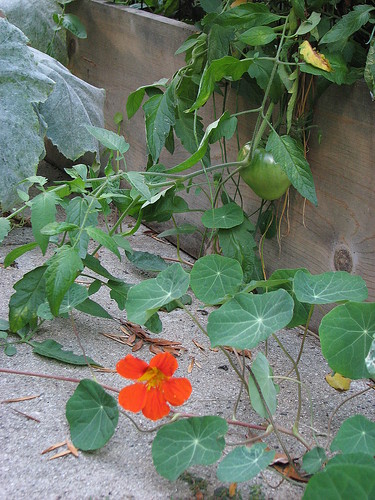It's October in Chicago. The
asters are blooming, the leaves are turning yellow, and the first frost is imminent. The cooler early fall weather has been a boon for the Spitfire nasturtiums, which rebounded from their bedraggled summer state and are still full and green. The nasties by the house filled in all around the purple aster that has just started to bloom. The purple and orange would make a striking color combo if only the nasties would produce more than two or three blooms at a time. Still, the contrasting foliage shapes look nice together. I like the idea of using nasturtiums as ground cover in the fronts of gardens and intend to try it again in the future.
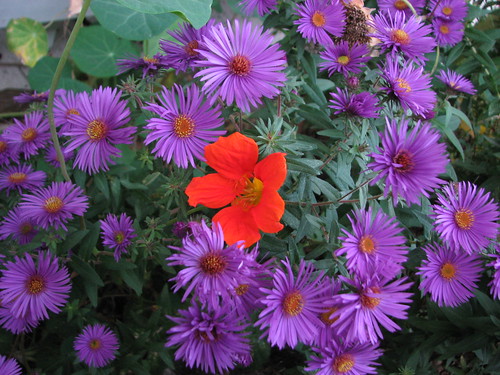
The nasturtiums by the alley fence didn't like being trained up the fence, but the vines on the ground did well in their shady spot. Still very few flowers, but the foliage softens the boundary between fence and ground and has a cute woodlandy look. You can still see the sad yellow vines that I had trained upwards.
 What have I learned doing this project?
What have I learned doing this project?
1) I can't comment on other nasturtium varieties, but at least the Spitfires do best on the ground. Planting them in a crowded spot and hoping they'll fill out up on a trellis does not work. Even draping the vines upward doesn't work, as the vines soon become spindly and yellow. Mine also didn't do great in containers; the leaves were smaller and the vines stayed short.
2) The Spitfires didn't flower as much as I was hoping, which is too bad because I love their color. I'd like to try other nasturtiums, perhaps yellow ones, that flower more reliably. However, nasturtium foliage is very cool and is worth the effort by itself.
3) Wintersowing is totally the way to start these babies. Direct sowing, for me, was a complete failure, and I have no patience for grow lights and hardening off.
4) The hottest part of the summer is rough but with enough water, the plants will pull through and look lovely in the cooler late summer and fall. My plants survived both in full sun and mostly shade.
Special thanks to
Mr. Brown Thumb and to
Renee's Garden for putting this project together. I hope everyone had a good time and that the shared feedback has been useful! I've enjoyed seeing everyone's stories and hopefully we can do this again sometime. Cheers!
I'm growing Nasturtium 'Spitfire' for the GROW project. Thanks to Renee's Garden for the seeds.
